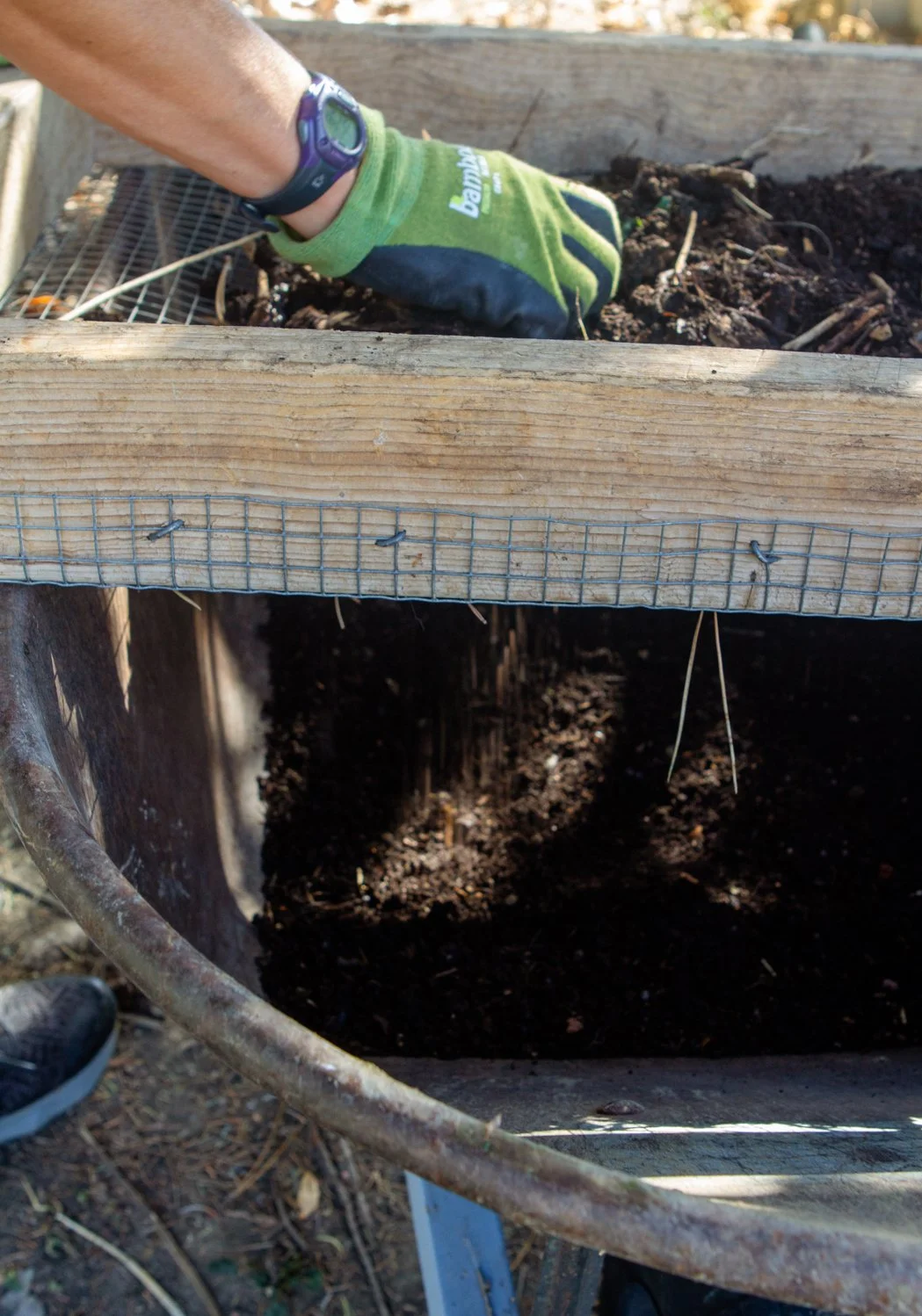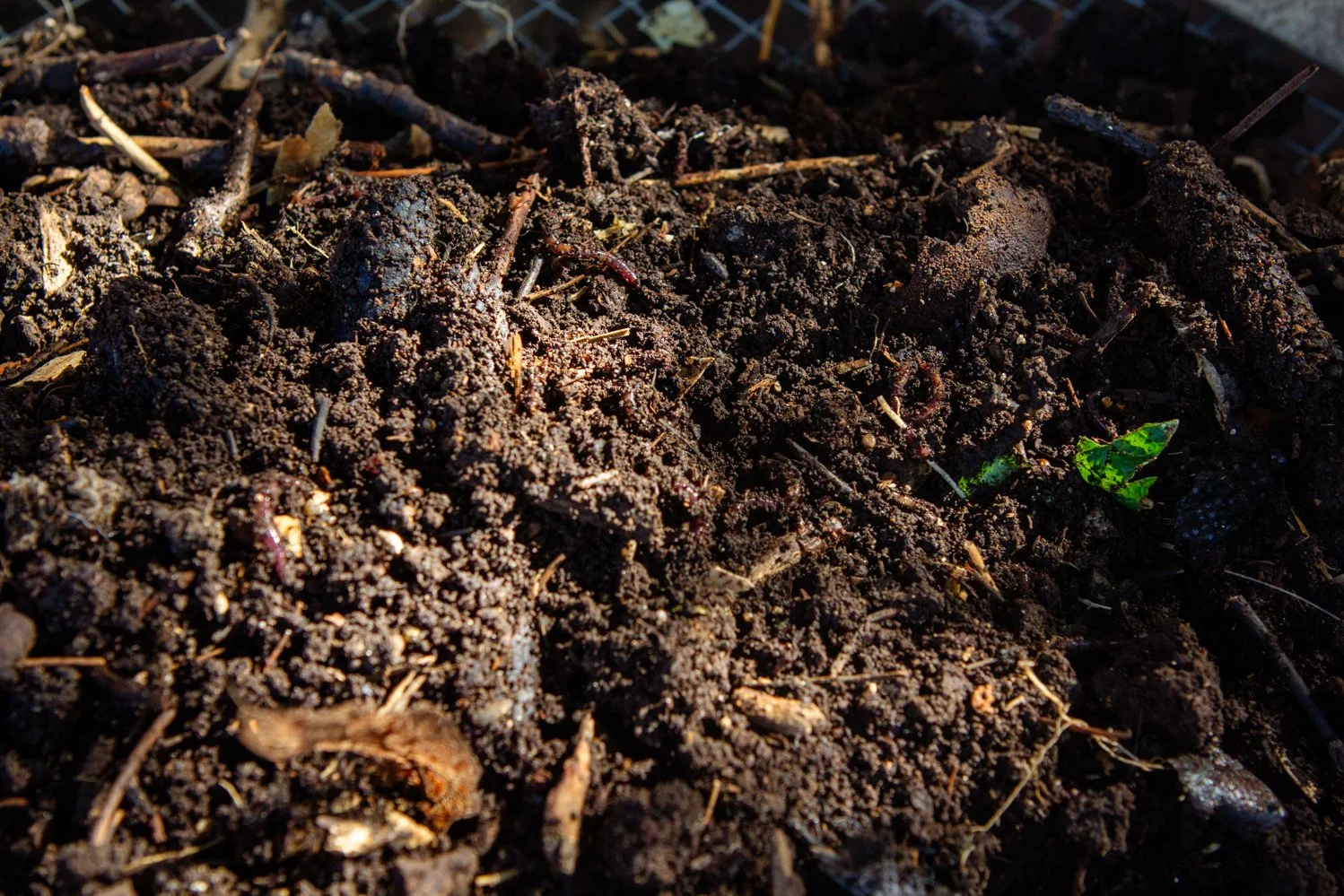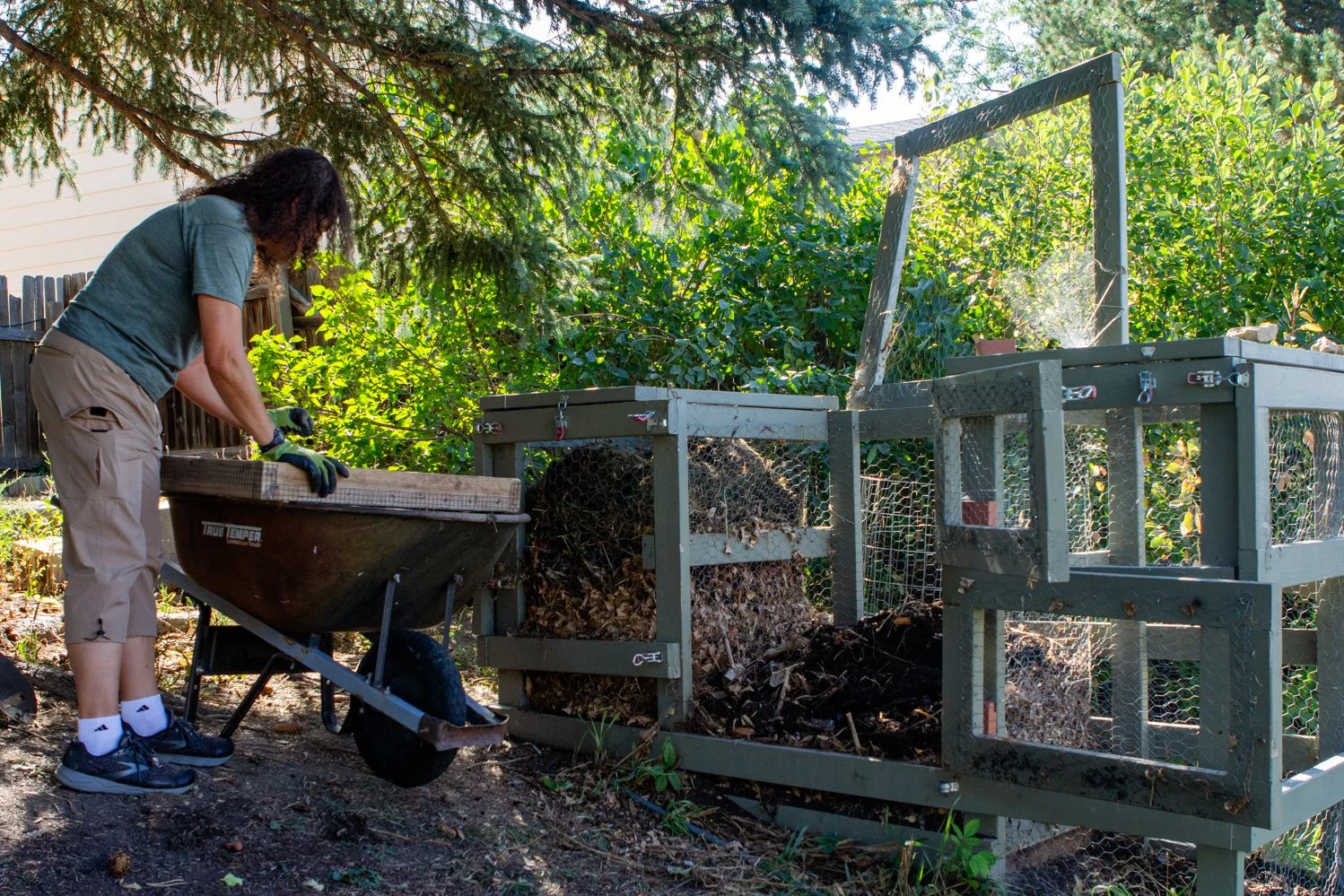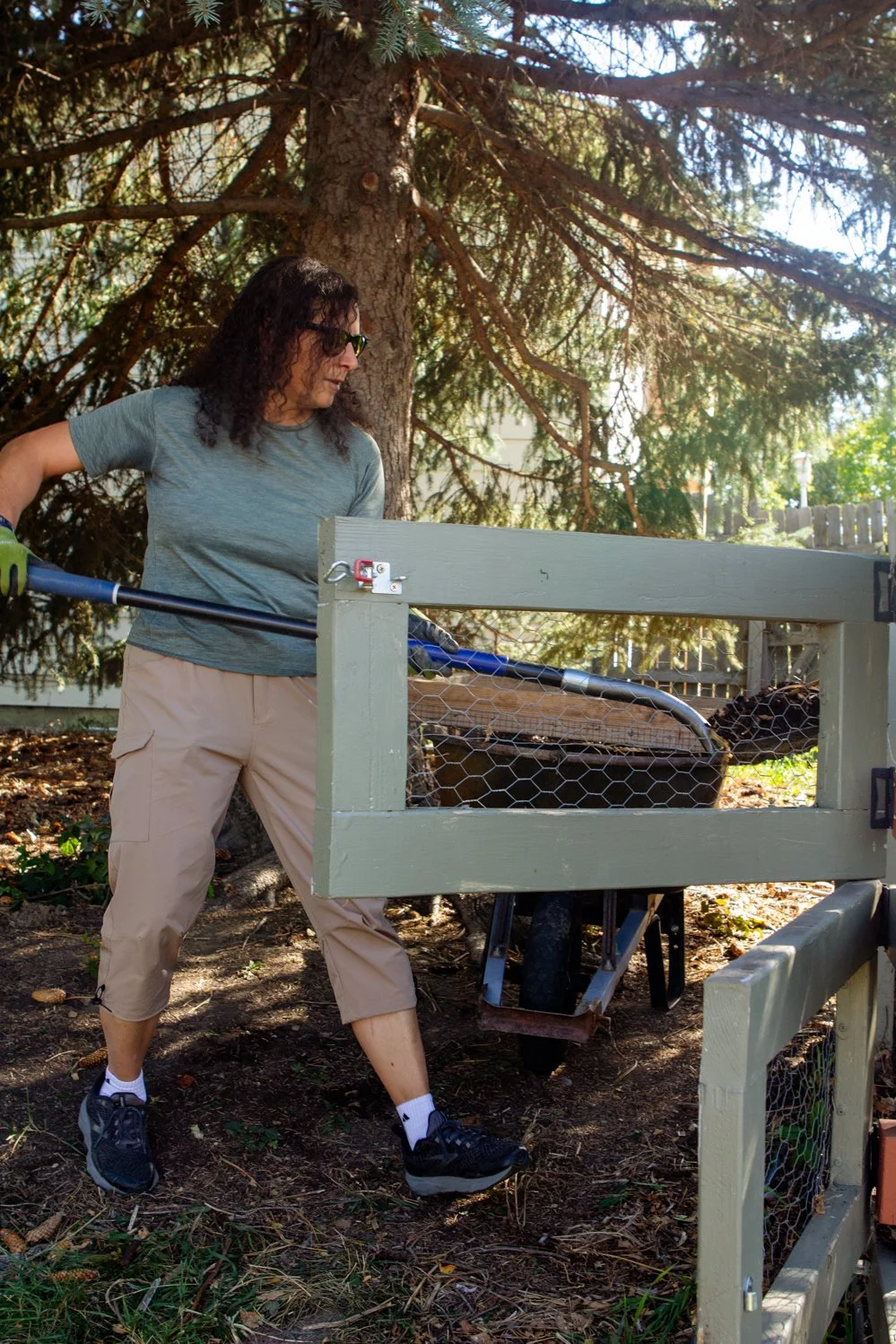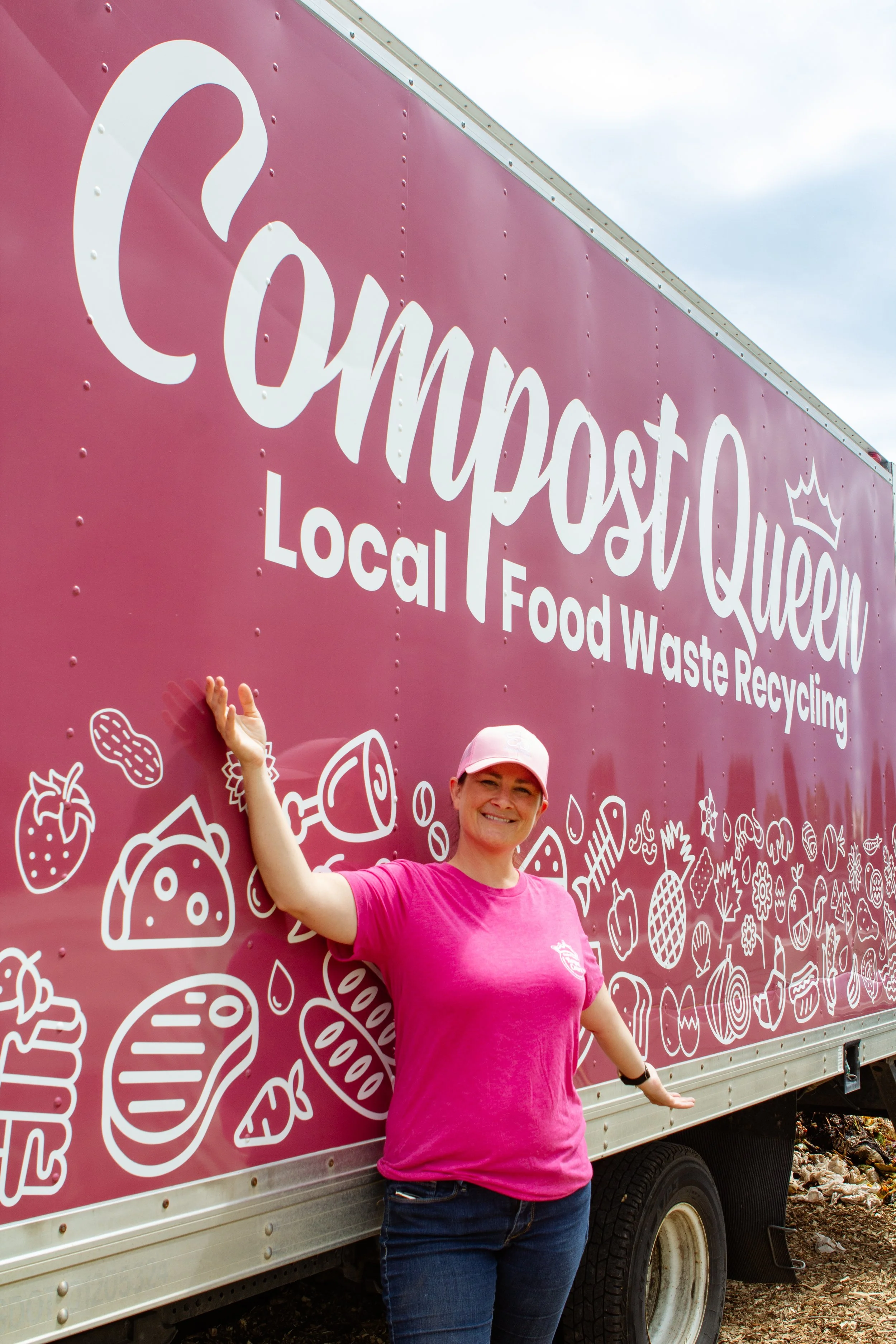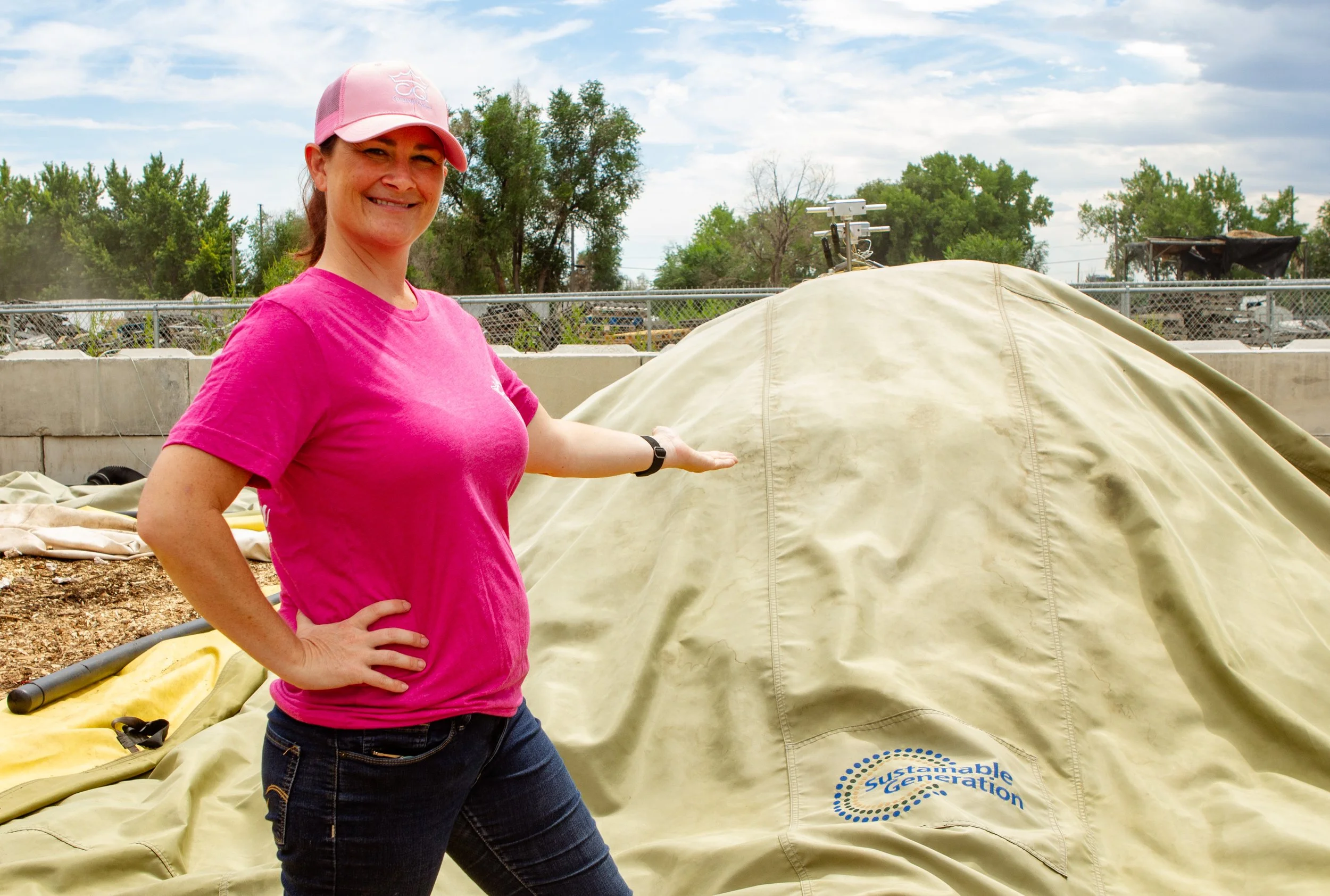Composting wants to happen. It just needs a little help.
An earthy, humic smell clings to the air on a sunny afternoon as Loveland, Colorado resident Laura Hinds shovels soft black-brown compost from a wheelbarrow into her third compost bin, tucked to the side of her backyard. “I’m no composting expert,” she says, chuckling. “You hear lots of stuff about how it could be perfect, but most of the time it doesn’t need to be. I just wanted compost to use for my garden.”
An article in the Ballard Brief Research Library reported in 2022 that the average American throws out over 400 pounds of food annually, translating to 40% of the United States food supply. When organic waste is packed into landfills, a lack of aeration (introducing oxygen) renders it unable to decompose, causing it to emit larger quantities of greenhouse gases into the atmosphere. Therefore, finding ways to reduce food waste is essential in neutralizing climate change.
Composting is a method of diverting organic waste from landfills by transforming it into a soil-like substance which can be used as fertilizer. Although requiring some maintenance, it’s a simple and less foul-smelling method of sustainable waste management, and local composters are urging people to try it.
What happens when you compost?
According to a composting guide for farmers published by the University of Wisconsin-Madison Center for Integrated Agricultural Systems, composting is a form of “controlled decomposition” in which you’re creating an environment for organisms to decompose waste efficiently.
“When you throw a banana peel on your garden, your plants can’t use that,” said Jamie Blanchard-Poling, founder and owner of Compost Queen. “But once that banana peel has been composted, your plants can uptake the potassium because it’s been recycled into a form they can use.”
The guide states that nematodes such as earthworms begin the breakdown process. When the temperature rises above 113 degrees Fahrenheit, thermophiles (microorganisms that thrive in heat) initiate the process. Upon reaching 130 degrees, the pile enters the “active phase,” and the oxygen levels must be maintained through passive aeration (turning the pile).
Once the active phase is complete, the guide states that the temperature drops to 100 degrees and the pile enters the “curing phase.” This phase ensures that the compost has low levels of organic acids, low carbon-to-nitrogen ratios, and low pH concentrations.
How can you compost?
Addy Elliott, a senior instructor of soil and crop sciences at Colorado State University, said a successful compost pile is comprised of 50% oxygen and 50% water. You should be able to gently squeeze a handful of actively composting material and see water pooling between your fingers.
Then, it must be provided thirty parts per carbon and one part nitrogen, often written as 30:1. Elliott said that dead leaves are approximately forty to one parts carbon to nitrogen (40:1 C:N), and vegetables are about fifteen to one parts carbon to nitrogen (15:1 C:N). Thus, vegetables have a higher concentration of nitrogen compared to leaves. She demonstrates calculating the correct ratio:
Three wheelbarrows of dead leaves (40:1): 40 + 40 + 40 = 120 parts carbon:nitrogen
Two wheelbarrows of vegetable scraps (15:1): 15 + 15 = 30 parts carbon:nitrogen
120 + 30 = 150 C:N
150 / 5 (number of wheelbarrow loads) = 30:1 ratio of C:N, an excellent starting ‘recipe’ for composting
There are many ways to achieve this. One is composting in a backyard using a batch system, like Hinds. Her first batch (pile) holds primarily fresh food scraps; the second pile holds dead leaves (which Hinds mixes with material from the first pile), and the third pile holds filtered, curing compost.
“In Colorado, the times you accumulate things varies,” Hinds explained on why she uses a three-batch system. “In about a month, [Fort Collins is] gonna have a bunch of leaves, and then never have leaves [during the winter]. It works better to store my leaves in a middle pile to scoop onto the fresh stuff.”
Hinds passively aerates the piles by stirring them with a shovel. According to Hinds, stirring is not on a regular schedule and is weather and accumulation dependent. She stirs about once per month in the warmer 6 months of the year and every 2 weeks for a month and a half in the spring or fall when she’s filtering and adding a lot of material. During the winter, she rarely stirs because she is not adding as much feed and parts of the pile might be frozen or snow-covered.
Hinds started with a “continuous pile” system; organic waste is mixed with browns on the top of a single pile and passively aerated, eventually producing compost once it reaches the bottom. Blanchard-Poling emphasizes that people use a set-up that works for them based on the amount of organic waste they produce and the time and space they have.
Budding composters must also decide whether to work with worms or microorganisms. Hinds began composting with microorganisms, but now works with worms. Blanchard-Poling, who composts with microorganisms at Compost Queen, compares worm composting to caring for pets. They require specific organic waste for their diet and often die in the winter (versus microbes, who hibernate until conditions are livable again).
Blanchard-Poling and Elliott said that microorganisms require the pile to be at least one cubic yard, and the temperature at least 131 degrees for active composting. Then the composter must provide a correct amount of greens and browns, add water, and aerate the pile.
“You’re farming microorganisms,” Elliott said. “You’ve given them food; now you have to make sure they have oxygen and water to live and breathe so they can reproduce and digest the material you gave them.”
Blanchard-Poling emphasized that composting is a process of trial and error. How you maintain the pile’s environment depends on your “feedstock” or what your compost recipe is. She compares the process to baking because “you’re going to get a different product based on what you put in.”
But Elliott said that once the temperature stops rising after observing a heat/cool cycle, and you’ve ensured that the material is moist enough, oxygen is provided, and the carbon-to-nitrogen ratio was correct, then the thermophilic process is complete. She said after the thermophilic process ends, a different group of microorganisms inhabit the pile and begin to cure the compost, which requires continued management of moisture and oxygen so the compost reaches maturity.
Laura Hinds filters compost in her backyard in Loveland, Colorado Sept. 23 2024.
Laura Hinds filters compost in her backyard in Loveland, Colorado Sept. 23.
Laura Hinds filters compost in her backyard in Loveland, Colorado Sept. 23 2024.
Laura Hinds shovels compost in her backyard in Loveland, Colorado Aug. 23 2024.
Composting Services
Those who don’t have the means to compost can use a service. Compost Queen offers food waste pick-up and drop-off to residents in Fort Collins, Timnath, Windsor, and Loveland. Blanchard-Poling said she created Compost Queen to expand access to composting in Northern Colorado.
“During the winter, everything just freezes, so there’s no year-round solution [to compost],” she said. “I finally was fed up…I was like, ‘Why isn’t there someone to do this for me?’ That’s when I realized people do a service.”
According to Blanchard-Poling, Compost Queen uses a Gore ™ cover, a “blanket” that covers the compost pile and regulates temperature and moisture. They also use an Aerated Static Pile (ASP) system, allowing airflow. These technologies allow for active composting year-round.
Compost Queen contributes to research done by the Compostable Field Testing Program under the Compost Research and Education Foundation (CREF). Blanchard-Poling, previously the Assistant Program Manager for CREF and CFTP, explained that the CFTP sends a kit that includes research tools and test products. Over a 90-day period, the protocal is used to track the decomposition of the products.
“There’s two different value perspectives with compostable products,” Blanchard-Poling said. “There’s the front end where you’re diverting waste, and then there’s the back end where you have something beneficial for the compost pile.”
Left: Jamie Blanchard-Polis poses for a photo outside one of the Compost Queen delivery trucks at the Compost Queen site Aug. 23 2024.
Above: Jamie Blanchard-Polis poses for a photo outside one of the Gore™ cover at the Compost Queen site Aug. 23 2024.
The Future of Composting
Blanchard-Poling said composting has grown from a million-dollar industry to a billion-dollar one in recent years. She estimates that many started composting while in lockdown during the COVID-19 pandemic.
“There’s been a lot more people interested in participating in composting, [and] a lot more businesses like mine have been popping up in the last two, maybe three years,” Blanchard-Poling said. “Composting is expanding tremendously.”
Ultimately, decomposition is a natural process that happens worldwide every day, and composters aim to harness this process and create a more sustainable food waste cycle. They hope you’ll join them.
“The world wants to decompose,” Elliott said. “It’s not that challenging to do the process of composting, and it serves our ecosystem sustainability far beyond taking food waste to the landfill.”
